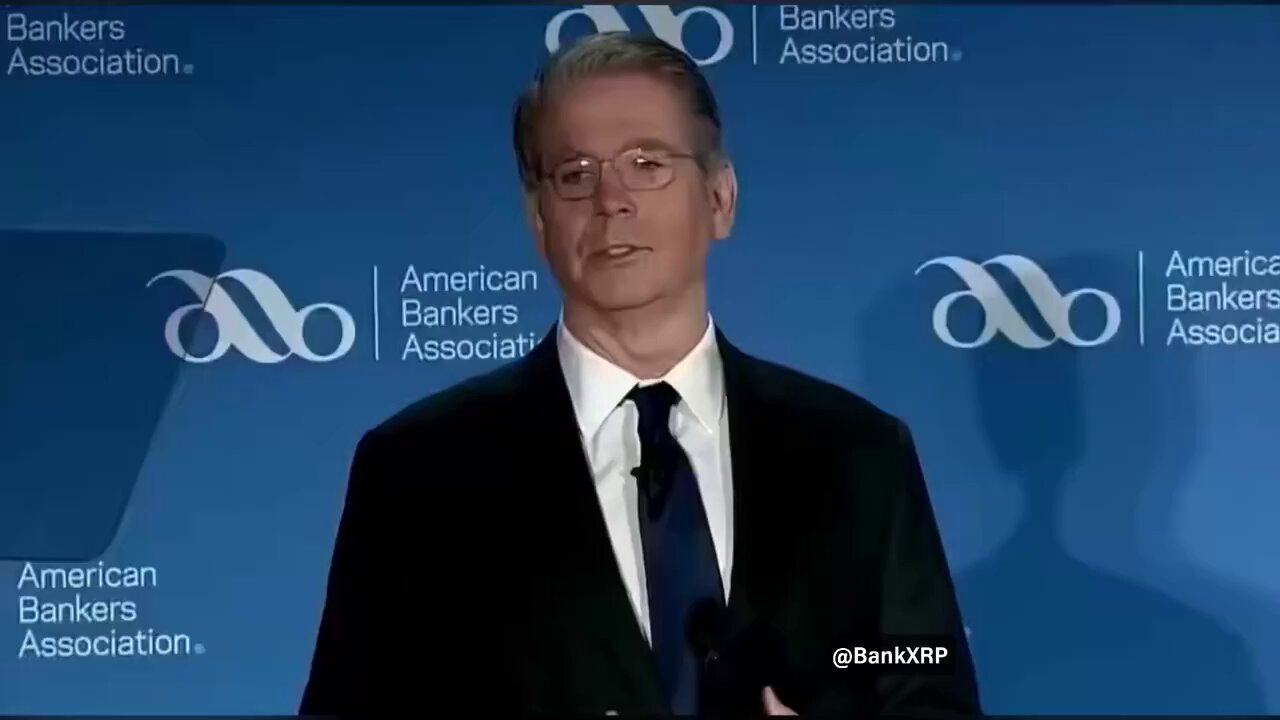Expanding digital economies, cross-border transactions and rising demand for instant outcomes are creating opportunities for new forms of digital money every day.
They’re innovative and cost-effective, they offer speed, security and privacy but they’re also mired in complexity and regulatory uncertainty.
The three most common varieties are cryptocurrencies, stablecoins and CBDCs - a Central Bank Digital Coin that’s a digital version of their own fiat currency. China is the most advanced of the major economies in developing its own digital money. In Australia, the Digital Finance Cooperative Research Centre has partnered with the Reserve Bank to explore use cases for an Australian CBDC.
Of all the digital currencies jostling to serve a need and solve a problem, which one will be the future currency of choice? This was the question debated by representatives from five leading global institutions at the Sibos 2022 conference in Amsterdam in October, where delegates gathered to learn about ‘Progressive finance for a changing world’.
Instead of a single future currency of choice, panellist Ian De Bode, a Partner with McKinsey & Company in San Francisco, suggested that different digital currencies solve different issues, which means we’re likely to need a range of options in the future. He said, for example, stablecoins are currently the preferred digital currency to make inter-platform or cross-border payments, store value, or provide liquidity for margin loans or swaps in decentralized finance (DeFi). That’s because, as its name suggests, it’s less volatile than cryptocurrencies as its value is pegged to a commodity, currency or a regulating algorithm, and it can engage with smart contracts.
“In terms of global adoption in the next 10 years, I think it’s going to be [a mix of] cryptocurrencies, stablecoin and CBDCs,” De Bode predicted.
Other panellists, such as the Bank of England’s William Lovell, said they expect CBDCs to emerge as the dominant digital currency.
Regulation and limitations key pain points for digital currencies
While they compete for usefulness and the premier position, digital currencies need to navigate some pain points.
Panellist, Sophie Gilder, Managing Director, Blockchain & Digital Assets, at Commonwealth Bank said regulation will be the key issue for any dominant future digital currency. But as yet, it’s unclear what that regulatory environment will look like.
“Regulatory capital rules have been proposed that might make it unattractive, for example, for regulated financial institutions to hold stablecoins,” Gilder said. “Other regulations could also impact who can issue a stablecoin.”
Gilder also noted that CBDCs may come with limitations, including:
- how much an individual or a corporation can hold;
- global interoperability; and
- whether interest can be paid.
Getting new digital currencies to talk to old tech
Interoperability was a key discussion point for the panellists with SWIFT Board member and Intesa SaoPaolo’s Head of Global Transaction Banking, Stefano Favale admitting interoperability would be a considerable challenge as adoption of digital currencies increases.
“Digital currencies will need to be able to interact with platforms. And we still need intermediaries to provide liquidity – otherwise, you cannot build interoperability and scale,” he said.
Gilder agreed, adding that interoperability is an issue businesses and global financial institutions are accustomed to tackling.
“Every time you use a technology, you need to make it speak to other technologies,” she said. “We need to build interoperability between digital assets and digital currencies living on blockchain as well as legacy technology, which will still exist and definitely has its place.”
The need for privacy versus the need to monitor illicit finance
One of the initial attractions of digital currency was its promise of privacy and anonymity. However that anonymity was often associated with activities such as money laundering. But as De Bode explained, there are legitimate reasons for keeping transactions private. Earlier this year, for example, many individuals the world over used stablecoins to transfer hundreds of millions of dollars to support Ukraine’s military efforts when traditional financing options could not act quickly enough. The digital donors welcomed the anonymity, given the conflict environment.
“A lot of people were willing to donate to the cause but didn’t want that transaction tracked to their individual account” explained De Bode.
Gilder added that digital currencies are more traceable than many would like to believe. To incentivise the adoption of CBDCs, she said, Central Banks and governments would need to factor in the need for privacy as part of the design.
“It’s not acceptable in many countries to have a surveillance architecture through a CBDC,” she said. “That’s something that we'll have to focus on very heavily to engender trust.”
The direction of digital currencies in Australia
The digital currency landscape in Australia differs somewhat from Europe and the United States. Gilder said Australia’s domestic direct payment system is already fast, free for retail use and relatively data rich – meaning there is not the same problem for CBDCs to solve as there might be elsewhere. What they can offer, however, is programmability and efficiency through automation.
“We don’t have a lot of digital assets now – but we will in future. I think that’s what we’ll be using CBDCs for – as a risk-free cash on ledger to efficiently transact on digital assets.”
Forecasts for digital currency over the next decade
Over the next 10 years, the panellists predicted that:
- Money will be less lumpy – people will be able to be paid by minutes and seconds rather than hours, days or weeks (Ricardo Correia).’
- Climate change will force us to optimise energy usage in ways we haven’t thought of yet and we will trade value. (William Lovell).
- Money will take different forms – and be much more user friendly (Sophie Gilder).
- Digital assets will grow and proliferate (Ian De Bode).
- If financial institutions can offer a superior experience with different payment options, they can leverage the stickiness of customers, because they can offer both central bank currency and commercial currency (Stefano Favale).
Our digital currency experts
Ricardo Correia is Managing Director and Head of Global Currencies, at R3. He leads strategy and commercialisation for digital currency (DC), namely CBDCs and stablecoins. He and his team have built a global DC working group with more 100 members, including major central banks in the G7 and G20 groups. In 2021 the R3 Digital Currencies team released a world-class Sandbox and Accelerator helping customers design, develop and deploy their solutions more efficiently and effectively. Ricardo served as Head of APAC at R3 for the first 18 months, growing the team and working with member banks across the region. He then spent three years as Global Head of Strategic Alliances & Partnerships, building a network of 300+ global partners who develop solutions and offer services on Corda. Before joining R3, Ricardo held senior leadership positions at Avanade, Accenture and CommBank.
Sophie Gilder is Managing Director, Blockchain & Digital Assets, at Commonwealth Bank. She is responsible for the research, experimentation, policy advocacy and commercialisation of blockchain-driven projects, including CBDCs, crypto and digital finance innovations. Previously, Sophie established the Blockchain and AI centres of excellence and was a founding member of x15ventures, managing a portfolio of fintech ventures. Sophie has a background in investment banking, working in capital markets across Europe and Australia, and experience as a start-up founder and adviser.
William Lovell is the Head of Future Technology, RTGS Renewal Technology, Bank of England. He is responsible for looking at how new technologies are influencing the financial system and how they can be exploited to meet the Bank’s mission. This involves work on distributed ledger, artificial intelligence as well as conventional technologies with a particular focus on payment and settlement platforms. Much of his time is spent working on the renewal of UK’s RTGS to ensure that the new platform is fit for purpose for the upcoming changes in financial technology.
Ian De Bode is a Partner with McKinsey & Company’s San Francisco office. He leads McKinsey’s digital assets service line in North America. Ian has distinctive experience working with financial institutions and investment funds, including building and bringing new blockchain-based products to market and defining the digital asset strategy. Before joining McKinsey, Ian worked as a product development manager at Umicore, the largest semiconductor manufacturer for specialty substrates (i.e., Germanium). Ian holds a B.Sc from the University of Leuven in Electrical Engineering, a M. Sc. From the University of Leuven in Nanoscience and Nanotechnology, and an MBA from the Stanford Graduate School of Business.
Stefano Favale is Head of Global Transaction Banking, Intesa Sanpaolo and SWIFT Board Member. Stefano is responsible for Corporate Digital Channels, Cash Management, Trade Finance, Acquiring, and Securities Services. He manages a team of 400+ sales and product managers across Italy and 40 other countries with the mission to deliver product and innovation to the overall business customer baseline. With more than 20 years in the banking industry, Stefano combines extensive experience in digital and transformational projects, broad managerial responsibilities in commercial banking, and a leadership position in the business payment community. He is also a board member of Banca Intesa Russia, Bancomat SpA, Exetra SpA and SWIFT.




























